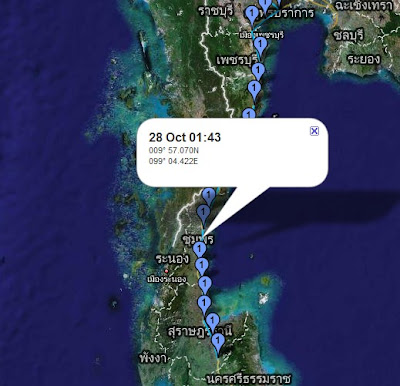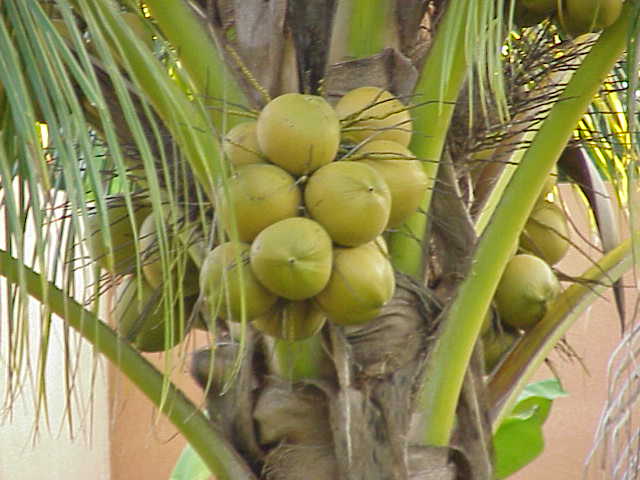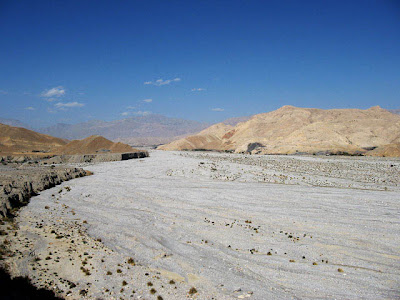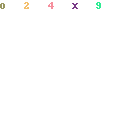 After several days of following Mark's journey down through Thailand, it is probably now useful to draw back a bit and take a look at Malaysia within the broader context of SE Asia...
After several days of following Mark's journey down through Thailand, it is probably now useful to draw back a bit and take a look at Malaysia within the broader context of SE Asia... Malaysia comprises two main areas of land - the Malay peninsula (Western Malaysia) which forms the southern extremity of the continent of Asia plus Malaysian Borneo (East Malaysia) which occupies one third of the island of Borneo. To the south of Malaysia lie the islands of Indonesia, the largest of which (Sumatra) is separated from Malaysia by the narrow Straits of Malacca. This stretch of water is often held to be the most important shipping lane in the world forming the main passage between the Indian and Pacific Oceans. At its narrowest, beside Singapore, it is only 2.5 kms wide. The position of Malaysia, commanding trade routes between India and China, meant that it saw a sequence of colonial rulers (Portuguese, Dutch and British) before gaining independence in 1957. The details of Malaysia's history are well described here.
Malaysia comprises two main areas of land - the Malay peninsula (Western Malaysia) which forms the southern extremity of the continent of Asia plus Malaysian Borneo (East Malaysia) which occupies one third of the island of Borneo. To the south of Malaysia lie the islands of Indonesia, the largest of which (Sumatra) is separated from Malaysia by the narrow Straits of Malacca. This stretch of water is often held to be the most important shipping lane in the world forming the main passage between the Indian and Pacific Oceans. At its narrowest, beside Singapore, it is only 2.5 kms wide. The position of Malaysia, commanding trade routes between India and China, meant that it saw a sequence of colonial rulers (Portuguese, Dutch and British) before gaining independence in 1957. The details of Malaysia's history are well described here.
Today Mark has cycled south through the province of Kedah. The web diary reveals that it is still raining and, as explained a couple of days ago in this posting , there is unlikely to be much change! If anything, November will get wetter.  Certainly the BBC weather pages suggest rain for the next five days for Penang and by then, of course, Mark will be heading for Australia and back to semi desert conditions.!
Certainly the BBC weather pages suggest rain for the next five days for Penang and by then, of course, Mark will be heading for Australia and back to semi desert conditions.!
Kedah is known as the rice bowl of Malaysia and it produces about one third of the country's total production of the crop. Following Mark's route today, there were several places with good views of flooded rice fields.. 
Most of the Google images in Thailand and Malaysia have clearly been taken in the dry season when there is less cloud cover. This means that the fields are bare, the rice having been harvested. However, next to rivers, as in this image, it will be possible to irrigate in the dry season and therefore obtain a second crop of rice in the year.
Away from the padis there are mile upon mile of plantations.. 
 Although rubber used to be the main plantation crop of Malaysia, these are more likely to be oil palms . And there's a lot of them
Although rubber used to be the main plantation crop of Malaysia, these are more likely to be oil palms . And there's a lot of them  !
!
Tonight Mark is over-nighting in Butterworth, the city on the mainland which is joined to the island of Penang and the city of Georgetown by the 13km long Penang bridge for which there is some excellent high resolution imagery...
 ...and a nice photo from Flickr
...and a nice photo from Flickr
 However, given the 7 hour difference, it was not so early after all! From the air, the most striking feature in this part of southern Thailand is the 100km long lagoon complex on the east coast. A bit of Internet research revealed that it is called Thale Luang (sometimes Lake Songhkla) and it is the largest natural lake in Thailand. There is a good account of it
However, given the 7 hour difference, it was not so early after all! From the air, the most striking feature in this part of southern Thailand is the 100km long lagoon complex on the east coast. A bit of Internet research revealed that it is called Thale Luang (sometimes Lake Songhkla) and it is the largest natural lake in Thailand. There is a good account of it 





 This is clearly showing a plantation crop but what is it? A bit of research produced the fact that the main agricultural product of the province is coconut so I guess that is what we are looking at in this view. The conditions for coconut also match closely what is found in this part of Thailand...
This is clearly showing a plantation crop but what is it? A bit of research produced the fact that the main agricultural product of the province is coconut so I guess that is what we are looking at in this view. The conditions for coconut also match closely what is found in this part of Thailand... 


 In the view above, you can clearly see a large lake in the middle of the image. This is the Kaeng Krachan Dam. Completed in 1996, it is 58 metres high and 760 metres long, overlooking beautiful scenery of the reservoir and its islands...
In the view above, you can clearly see a large lake in the middle of the image. This is the Kaeng Krachan Dam. Completed in 1996, it is 58 metres high and 760 metres long, overlooking beautiful scenery of the reservoir and its islands... The reservoir is on the edge of Thailand's largest national park - the
The reservoir is on the edge of Thailand's largest national park - the  By lunchtime today Mark was approaching the narrowest part of Thailand - a mere 15km wide between the Gulf of Thailand and the Burmese border...
By lunchtime today Mark was approaching the narrowest part of Thailand - a mere 15km wide between the Gulf of Thailand and the Burmese border...


 The first problem for those of us who are following the tracker is that place names in Thailand on Google Maps would appear to be written in the
The first problem for those of us who are following the tracker is that place names in Thailand on Google Maps would appear to be written in the 





 You can re-read the posting about Mt Ararat
You can re-read the posting about Mt Ararat 
 But the most beautiful was surely what I called 'the painted desert' in the mountainous terrain close to the Pakistan border described in the posting of
But the most beautiful was surely what I called 'the painted desert' in the mountainous terrain close to the Pakistan border described in the posting of 





 Mark is now about 200km north of Calcutta and about to enter the part of the
Mark is now about 200km north of Calcutta and about to enter the part of the  This image
This image 


 After crossing the last major tributary of the Ganges, the
After crossing the last major tributary of the Ganges, the 
 The view shows an area where low res gives way to high res imagery. However, the left part of the view was clearly captured in the wet season (June to September)while the right hand portion was photographed in the dry season . What a difference a bit of rain makes!
The view shows an area where low res gives way to high res imagery. However, the left part of the view was clearly captured in the wet season (June to September)while the right hand portion was photographed in the dry season . What a difference a bit of rain makes!
